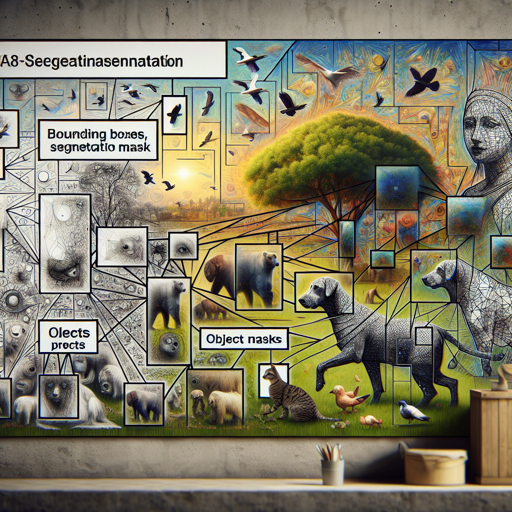In the realm of artificial intelligence, real-time object segmentation has emerged as a game-changer, particularly for mobile devices. Welcome to the world of Yolo-v8-Segmentation, a powerful machine learning model that predicts bounding boxes, segmentation masks, and classes of objects in images. This guide will walk you through the installation, configuration, and execution of this model for image segmentation, with a special focus on optimized mobile deployment.

Understanding Yolo-v8-Segmentation
The Yolo-v8 model functions like a skilled artist, analyzing an image and drawing precise boundaries around different objects, giving each a unique label. Imagine an artist looking at a complex mural and identifying various elements like trees, animals, and people—this model does just that, but at lightning speed and with impressive accuracy. Here’s a closer look at its features:
- Model Type: Semantic segmentation
- Input Resolution: 640×640
- Number of Parameters: 3.43M
- Model Size: 13.2 MB
The model has been designed specifically for mobile deployment, ensuring efficient performance across a range of devices, including the high-performance Samsung Galaxy S23 Ultra.
Installation Steps
Ready to get hands-on with Yolo-v8-Segmentation? Here’s how to install it as a Python package using pip:
pip install "qai-hub-models[yolov8_seg]"Configuring Qualcomm® AI Hub
To run the model on cloud-hosted devices, follow these steps:
- Sign in to Qualcomm® AI Hub using your Qualcomm® ID.
- Navigate to Account -> Settings -> API Token to obtain your API token.
- Then configure your client with the following command:
qai-hub configure --api_token API_TOKENFor further details, check the documentation.
Running the Demo
The package includes an end-to-end demo that downloads pre-trained weights and processes sample input. To execute the demo, use the command:
python -m qai_hub_models.models.yolov8_seg.demoIf you’re utilizing a Jupyter Notebook or Google Colab, adapt your command as follows:
%run -m qai_hub_models.models.yolov8_seg.demoExecuting on a Cloud-hosted Device
In addition to running a demo, you can deploy the model directly on a cloud-hosted Qualcomm® device. This execution setup includes performance checks, asset downloads for Android, and accuracy validation between PyTorch and on-device outputs.
python -m qai_hub_models.models.yolov8_seg.exportDeployment Capabilities
Once your model is ready for action, you can deploy it through two primary runtimes:
- TensorFlow Lite (.tflite): Find a deployment guide on TensorFlow Lite’s quickstart page.
- QNN (.so): Reference the sample app instructions for using the .so shared library in an Android application.
Troubleshooting
If you encounter any issues during installation, configuration, or execution, consider these troubleshooting steps:
- Double-check your API token and ensure you are correctly signed in to Qualcomm® AI Hub.
- Ensure your Python environment is properly set up with all necessary dependencies installed.
- Refer to the documentation for specific error messages encountered during runtime.
For more insights, updates, or to collaborate on AI development projects, stay connected with fxis.ai.
Conclusion
Deploying Yolo-v8-Segmentation for real-time image segmentation not only enhances your application’s performance but also elevates user experience through tangible enhancements in object detection capabilities. At fxis.ai, we believe that such advancements are crucial for the future of AI, as they enable more comprehensive and effective solutions. Our team is continually exploring new methodologies to push the envelope in artificial intelligence, ensuring that our clients benefit from the latest technological innovations.

